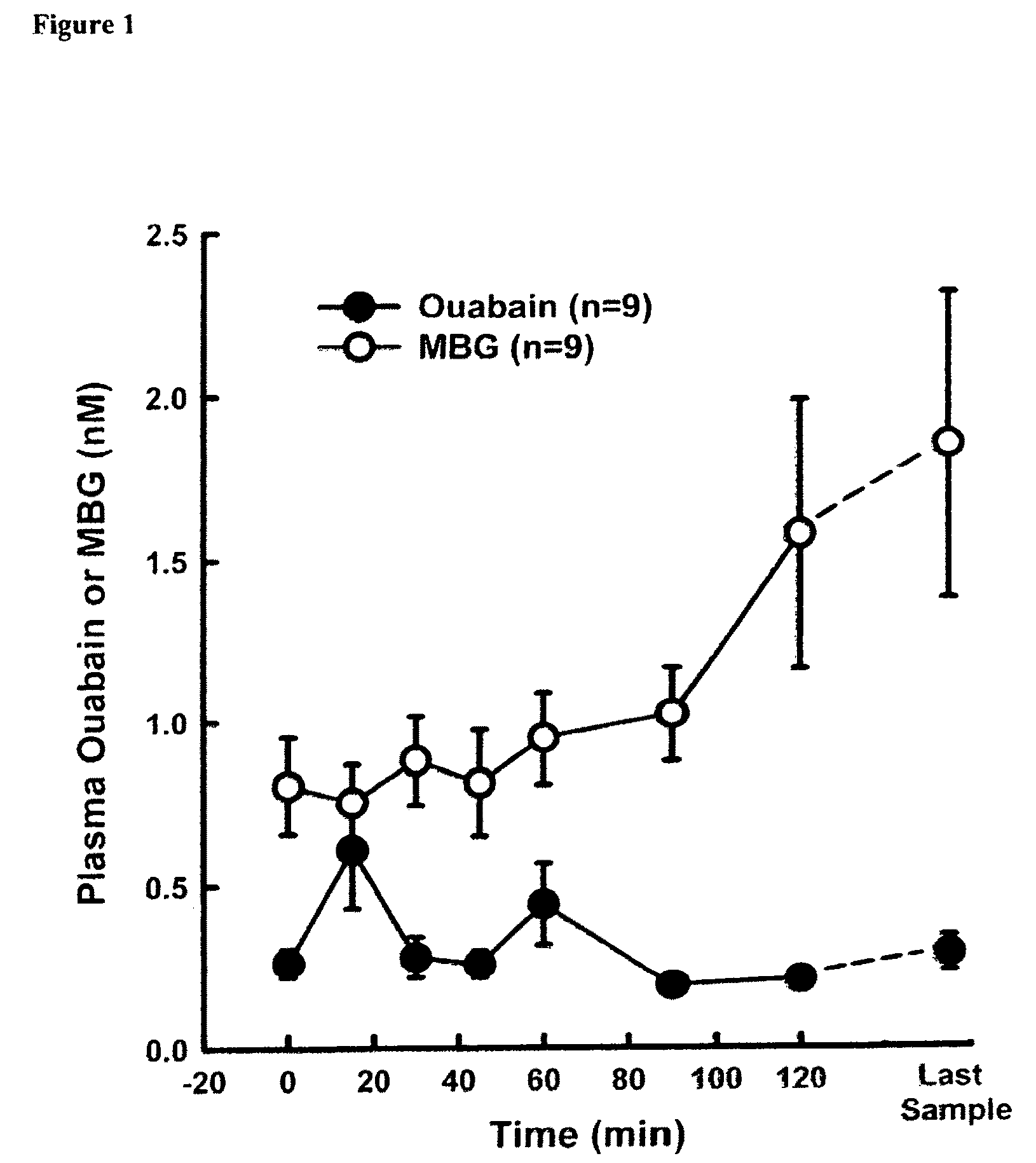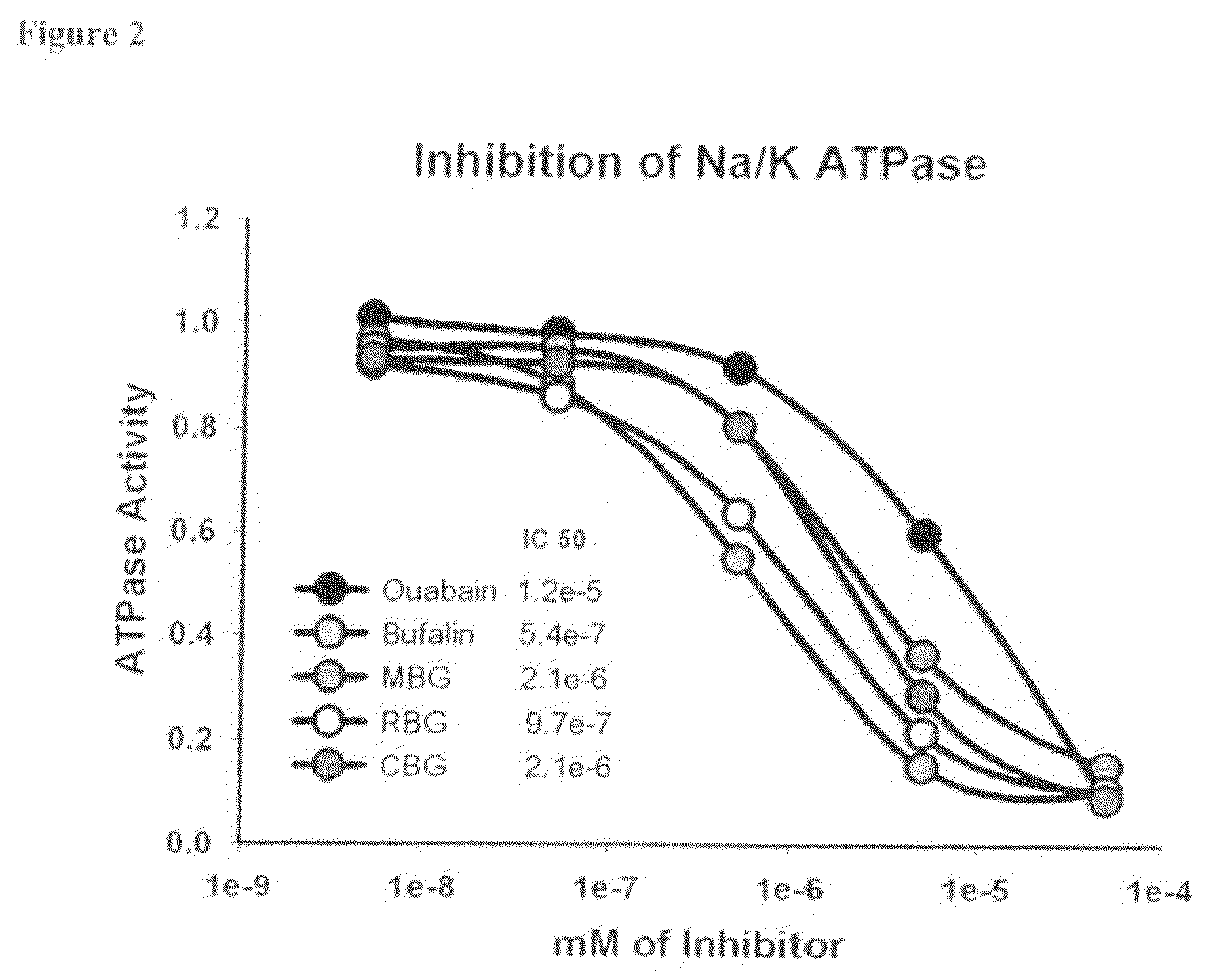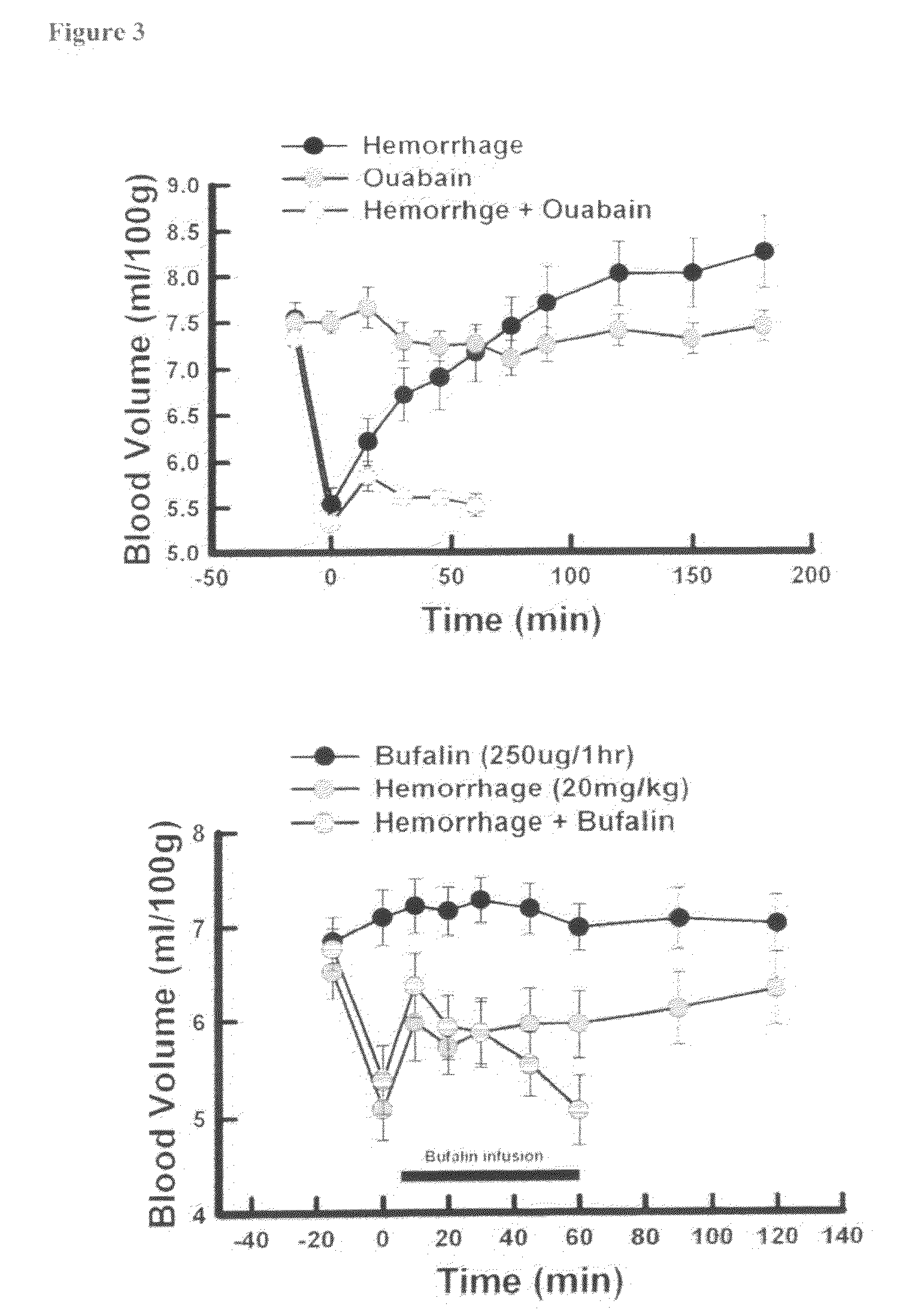Antibodies to bufalin prevent inhibition of Na/K ATPase and prolong survival in shock
a bufalin and anti-atpase technology, applied in the field of medicine, cell biology and physiology, can solve the problems of hemorrhagic shock being an extremely complex process, patient is likely to die, and hemorrhagic shock is a life-threatening condition, so as to and reduce or inhibit the activity
- Summary
- Abstract
- Description
- Claims
- Application Information
AI Technical Summary
Benefits of technology
Problems solved by technology
Method used
Image
Examples
example 1
Rat Shock Model and Measurement of Bufadienolides
[0055]Sixteen male Sprague-Dawley Rats (300-380 g) were anesthetized with pentobarbital sodium (50 gm / kg) and cannulaes were placed in the femoral artery (PE-50) and vein (PE-90) for measurement of arterial blood pressure and blood withdrawal, respectively. After 15 min of stabilization, blood was drawn from the femoral vein until Mean Arterial Blood Pressure (MABP) reached 35 mmHg and was continually withdrawn to maintain the MABP at 35 mmHg. During this period, each rat defended pressure and blood was removed to maintain MABP at 35 mmHg. Blood samples were taken from the venous cannula at various times for determination of the plasma bufadienolide, MBG (currently, there is no assay for any of the other bufadienolides) and ouabain (FIG. 1). These data demonstrate that plasma bufadienolides levels increase upon conditions of profuse bleeding and hemorrhagic shock.
example 2
Na / K ATPase Activity by pNPP
[0056]Na / K ATPase activity was determined by the conversion of pNPP (para nitrophenylphosphate to para nitrophenyl+phosphate using soluble dog Na / K ATPase (FIG. 2). 100 ul of Na / K buffer (395 nM NaCl, 75 mM KCl, 15 mM MgSO4, 800 mM HEPES) was added to a 96 well microplate. Various concentrations of bufalin, marinobufogenin, resibufogenin, cinobufagin or Ouabain were added with 10 ul of 0.25 units / ml dog Na / K ATPase (SigmaAldrich). 20 ul of 0.1 mM ATP / 70 mM MgCl2 was added. 20 ul of pNPP (para nitrophenylphosphate, SigmaAldrich) was added. The 96 well plate was placed in a Spectrophotometer measuring wavelength 400 nm every 30 sec to obtain a rate of conversion of pNPP to pNP+phosphate by ATPase over 30 min. The rate of conversion is compared between different doses of bufalin, marinobufogenin, resibufogenin, cinobufagin or Ouabain (FIG. 2). These data demonstrate that bufadienolides inhibits Na / K ATPase activity directly.
example 3
Inhibition of Na / K ATPase by Bufalin or Ouabain Contributes to Lethal Hemorrhage
[0057]These experiments were conducted using a modification of the chronically cannulated rat originally described by Fagin, Shinsako and Dallman, Am. J. Physiol. 245:E515,1983. Male Sprague-Dawley rats weighing 300-400 g are anesthetized with pentobarbital sodium (50 mg / kg ip). The femoral artery and vein is exposed and cannulas are inserted. The femoral artery (Dural Plastics) and femoral vein (PE-50) cannulas are for measurement of arterial blood pressure and heart rate and for injection. The cannulas are tunneled under the skin of the back to exit at the back of the neck using a 10 gauge trokar. A Dacron felt covered end of a stainless steel spring was connected, under the skin at the back of the neck. The skin is sutured around the spring using 4-0 braded silk. Both cannulas traverse the spring to the top of the cage and are plugged. The other end of the spring is connected to the top of the cage by...
PUM
| Property | Measurement | Unit |
|---|---|---|
| pressure | aaaaa | aaaaa |
| concentration | aaaaa | aaaaa |
| membrane potential | aaaaa | aaaaa |
Abstract
Description
Claims
Application Information
 Login to View More
Login to View More - R&D
- Intellectual Property
- Life Sciences
- Materials
- Tech Scout
- Unparalleled Data Quality
- Higher Quality Content
- 60% Fewer Hallucinations
Browse by: Latest US Patents, China's latest patents, Technical Efficacy Thesaurus, Application Domain, Technology Topic, Popular Technical Reports.
© 2025 PatSnap. All rights reserved.Legal|Privacy policy|Modern Slavery Act Transparency Statement|Sitemap|About US| Contact US: help@patsnap.com



